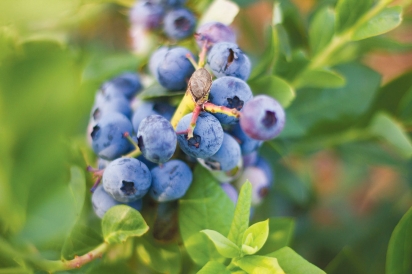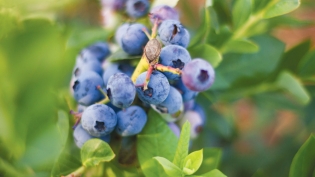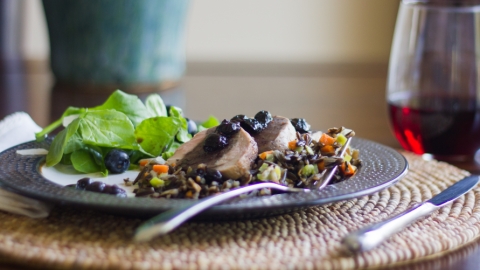Ventura County's Blueberry History
With Ventura County’s temperate Mediterranean climate, growing subtropical and low-chill deciduous fruit trees has been a tradition. But blueberry bushes? No way, they were never considered a viable crop here.
In the wild, blueberries thrive in moist areas beneath an overhead canopy, where decaying leaves help create sulfurous, acidic soil. Recently, though, thanks to fertility and pH management, commercial blueberry production has become possible in warmer climes like Florida and Texas, and now Southern California.
“The story starts with a Master Gardener training class in 1993,” says Farm Advisor Ben Faber, PhD, of the UC Cooperative Extension Ventura County. “One of the trainees, Bob Vieth, spoke up and said he was growing low-chill varieties that were released by the USDA and University of Florida.”
From that day on, a small group of local farmers have run trials, matching specific strains (such as Misty and Sharpblue) with our environment.
Underwood Family Farms—which has roots in Ventura County that go back to the 1860s—was one of the earliest adopters, planting its first blueberry bushes about 13 years ago, recalls owner Craig Underwood. “Ben [Faber] suggested that Ventura had a good marketing window,” he says. A year or two later, Pacific Blues (by Underwood Ranches) became the county’s first blueberry brand to sell commercially.
Despite being new players in the national blueberry game, local growers have a significant advantage over those in other states: Here, berries ripen months earlier than traditional spring and summer harvests.
In the über-competitive world of agriculture, that’s a huge leg up. When low supply demands higher prices, local farms are the only ones in the country whose blueberry crops are yielding late January into June, before farms in Oregon, Maine, Michigan and Canada come to market and drastically drive down the per-pound price.
Will Gerry of Coastal California Blueberry Farm in Camarillo, another early adopter, says that while the season comes to an end in June, “we are continually hoping to find a variety that will produce in volume in the fall.”
So far, the county’s blueberry boom is moving along sweetly. In the 2013 Ventura County Crop and Livestock Report, blueberries had grown to a nearly $16 million crop, ranking 17th, just ahead of lettuce.
“There is a long-term future here,” says Faber, who sees the crop likely moving up a notch or two in the rankings if prices continue to be good. “They are going to have beat out a whole bunch of cilantro to go into the top 10.”
Underwood agrees: “I believe they will remain a niche crop and not gain major crop status, even though the quality of Ventura County blueberries is superior.”
Ryan A. Smith is an Ojai-based freelance writer, author and former editor-in-chief and social media manager of SLIDE magazine.












